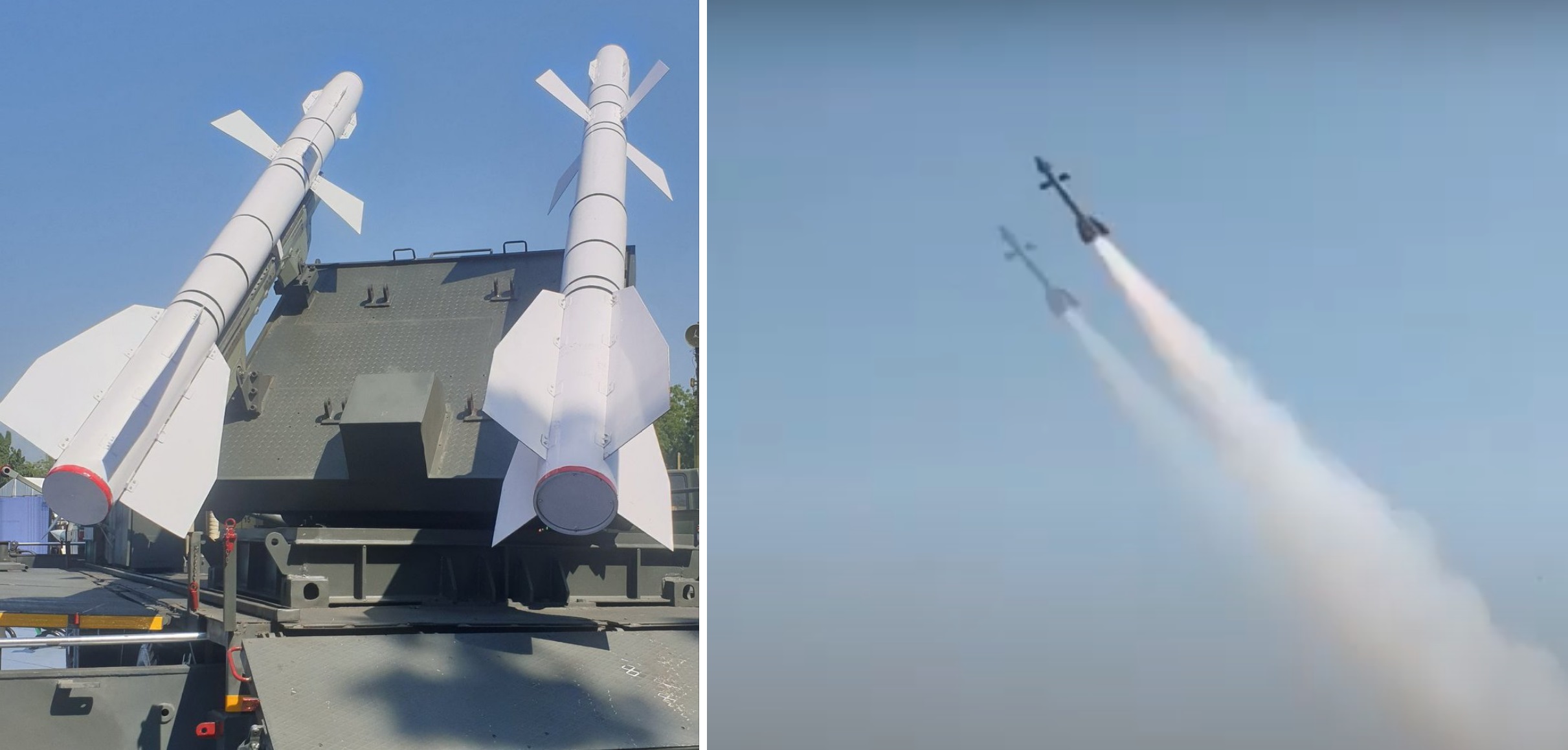
On January 16, it was announced that Ukraine will receive Gravehawk surface-to-air missile (SAM) systems from the UK. However, details about these systems are scarce, with most information coming from a UK Ministry of Defense statement. Based on available data and logical assumptions, here’s an analysis of what the Gravehawk SAM might be.
The Gravehawk is an anti-aircraft missile system whose urgent development was jointly funded by Britain and Denmark.
Two Gravehawk prototypes have reportedly already been tested in Ukraine. This year, the UK plans to transfer 15 more units.
As we have already informed, this is not a full-fledged new development, but rather a compilation of ready-made solutions based on air-to-air missiles.
This description includes the anti-aircraft missile systems that the UK has already transferred to Ukraine based on AIM-132 ASRAAM missiles, the launcher for which is mounted on the Supacat HMT chassis.

In its original design, the AIM-132 missile weighs 88 kg, is 2900 mm long, and has a body diameter of 166 mm.
When launched from an aircraft, such missiles typically have a range of up to 25 km. However, their range is significantly reduced when fired from ground-based launchers.
More about this “ersatz SAM” can be found in the article by Doctor of Historical Sciences Andrii Haruk or in the October 4, 2023 issue of Militarnyi podcast:
However, such an option is unlikely. At least according to the Defense Ministry’s announcement, it’s about Ukrainian missiles:
“The innovative system, the size of a shipping container, is capable of modernizing air-to-air missiles for ground-based air defense, i.e., using Ukrainian missiles already in service with their Armed Forces,” reads the statement.
In other words, we are talking about missiles produced in Ukraine and used by the Air Force of the Armed Forces of Ukraine.
In the final years of Ukraine’s socialist era, only one type of air-to-air missile was manufactured domestically: the R-27. However, this does not rule out the possibility that other Soviet-made missiles, such as the R-73, could have been adapted and classified as Ukrainian. For example, the R-73 has been successfully integrated into the Osa SAM system with support from the Come Back Alive Foundation.
The focus is primarily on R-27 missiles, which exist in various configurations, including versions with semi-active radar and infrared homing systems. While there were efforts to develop variants featuring passive and active homing guidance, the outcomes of these initiatives remain unknown.

Back in 2017, Militarnyi reported that the then head of Ukroboronprom, Roman Romanov, proposed to the Polish industry to jointly develop a short-range air defense system using R-27 missiles manufactured by the Kyiv-based Artem enterprise.

The Polish partner was WB Electronics, which is one of the most powerful defense companies in Eastern Europe in the field of electronics.
In 2019, during a scientific and practical conference on Polish air defense, Roman Mushal, a representative of the industrial group, confirmed his interest in the project.
The businessman said that most of the necessary elements have already been created: the engine, fuel, and homing head (active, passive, and thermal imaging elements). According to him, with active project funding, the first results should be ready in about three years.
However, as we can see from the description, the implementation required a proven technology with new radar GEOs, testing them in the missile, launches, etc. And a separate piece of work was integration with radar stations for observation, tracking and other machines into a single unit.
At first glance, it may appear that these attempts led to no tangible results; however, this is not entirely accurate. In collaboration with a Polish company, there were considerations to adapt the R-27 missiles with various homing pods. Moreover, as demonstrated by the successful use of R-73 air-to-air missiles from ground and surface launchers, the concept of an ersatz SAM based on R-27 missiles equipped with infrared homing pods is both feasible and practical.
Ukraine was not even a pioneer in its use. Are you surprised? Back in early 2018, we reported on the downing of an F-15 fighter jet of the Royal Saudi Air Force in Yemen.
The video of that attack is still available on the Tysch channel on YouTube:
The Saudi Ministry of Defense reported then the destruction of the launcher of this “ersatz SAM” and the machine with the generator necessary for its operation:

To simplify the principle of operation, the R-27T missile is mechanically guided to the target within the seeker field of view and launched, where it must then independently control the missile on its way to the target. Implementing this is easier than creating a full-fledged anti-aircraft missile system, but there are also many pitfalls, such as the age of the missiles, weather conditions, anti-missile measures on the aircraft, etc.
It is believed that Yemeni militants were helped to implement such a system by Iranian experts, who had extensive experience in integrating various weapons to their needs (for example, they integrated the R-27 missile into an F-14 aircraft), reverse engineering, etc.
Other nations have employed similar approaches. For instance, in 2022, India revealed the Samar-2 air defense system based on the R-27T missile.

It was designed to repurpose expiring air-to-air missiles for ground launches.
Though the Samar-2’s operational status is unclear as of January 2025, its earlier version, the Samar-1, successfully launched R-73 missiles.
The exact nature of the Gravehawk anti-aircraft missile system remains unclear. However, based on the logical assumption outlined above, it is plausible that the system could utilize R-27 missiles. Ukraine possesses stockpiles of these missiles, which are actively used by Su-27 fighters of the Ukrainian Air Force.

If this assumption is correct, the effectiveness of these missiles is a valid concern, given that they may have been manufactured over three decades ago.
Підтримати нас можна через:
Приват: 5169 3351 0164 7408 PayPal - [email protected] Стати нашим патроном за лінком ⬇
Subscribe to our newsletter
or on ours Telegram
Thank you!!
You are subscribed to our newsletter